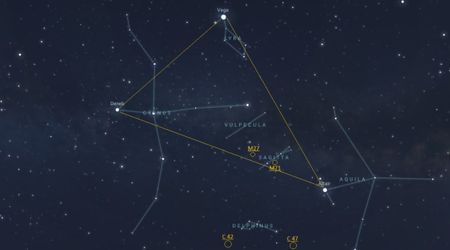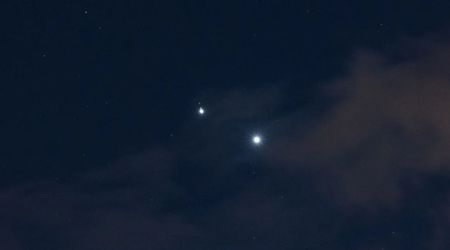Don't miss the moon glowing beside bright star Antares in constellation Scorpius on October 24
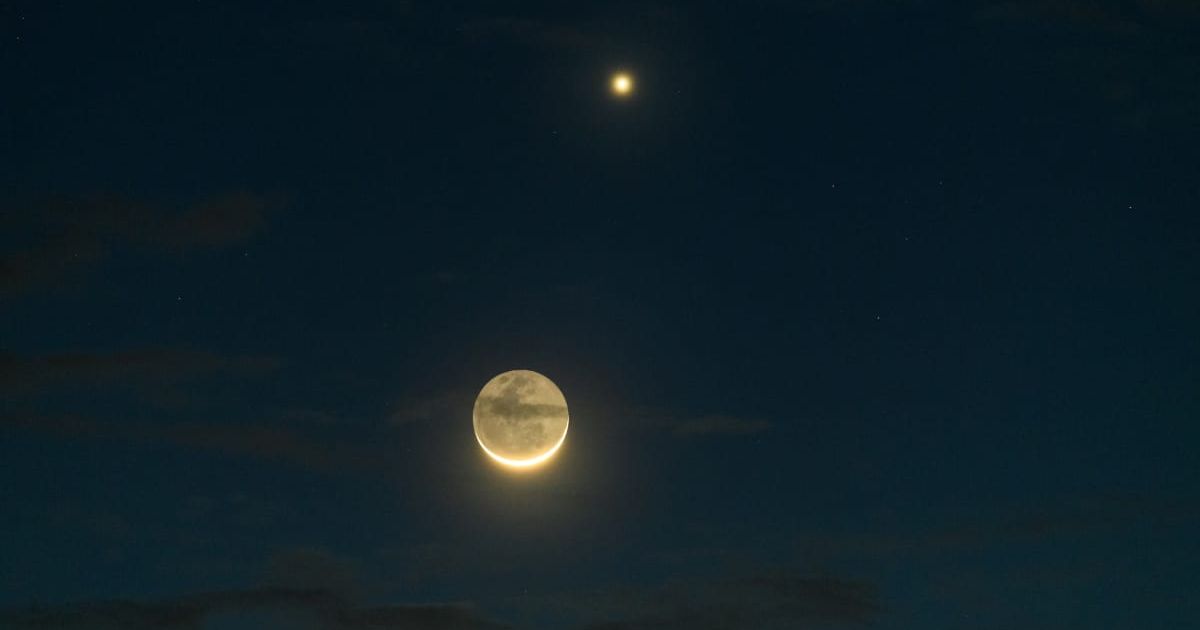
Stargazers are advised to look low on the western horizon shortly after sunset on October 24 to witness a striking cosmic pairing: the slender, waxing crescent moon positioned near the brilliant red star Antares, the heart of the Scorpius constellation, as per Earth Sky. The close alignment is a fleeting event. On the following evening, October 25, observers will see the crescent moon noticeably higher in the sky and further separated from Antares as it continues its orbital journey.
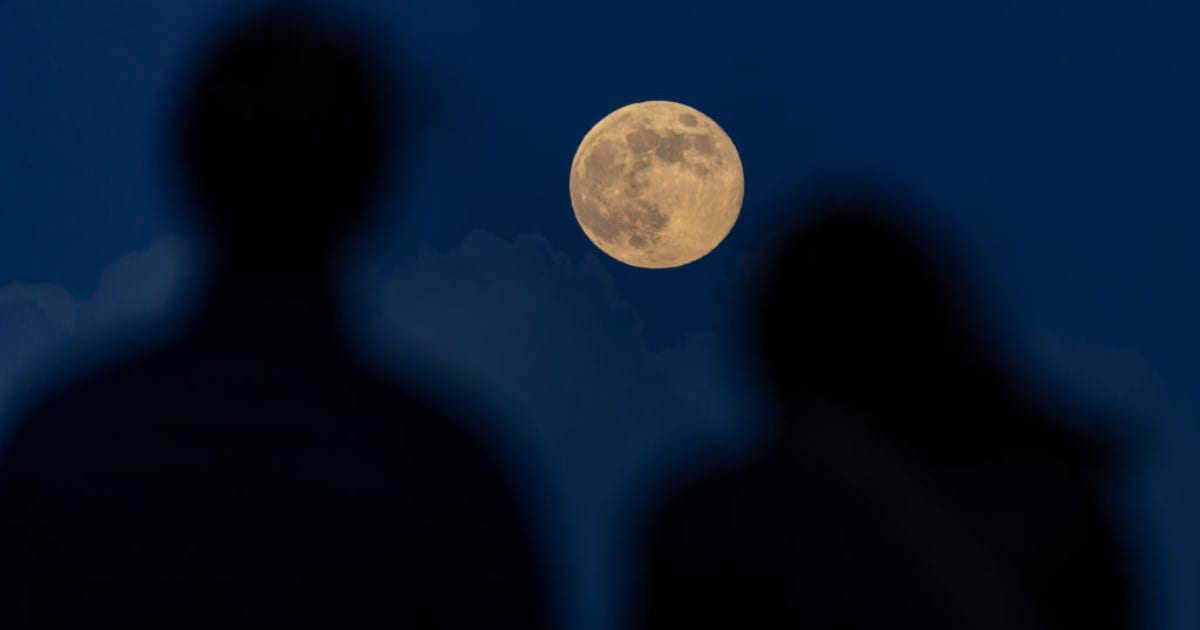
The moon's appearance on October 24 coincides with it reaching apogee, its farthest point from Earth in its elliptical orbit, at 8:00 p.m. EDT, roughly 252,552 miles (406,444 km) away. As the week progresses, the Moon's phase will thicken. By the evenings of October 26 and 27, it will be seen tracking through the distinct Teapot asterism belonging to the Sagittarius constellation. The first quarter moon phase will officially occur at 12:21 p.m. EDT on October 29, 2025. This quarter moon, which rises around noon local time and sets near midnight, will be situated squarely within the boundaries of Capricornus, the Sea-goat. The waxing gibbous moon will then move clear of Capricornus on the evening of October 30.

The end of October will also feature a key moment for the inner planet Mercury. On October 29, the planet will reach its greatest eastern elongation, or its maximum angular separation from the sun in the western sky. This alignment offers the most favorable evening viewing of Mercury for those in the Southern Hemisphere in 2025. Finally, on Halloween night, the waxing gibbous moon will complete the month's parade of celestial events, hanging near the planet Saturn and the prominent star Fomalhaut.
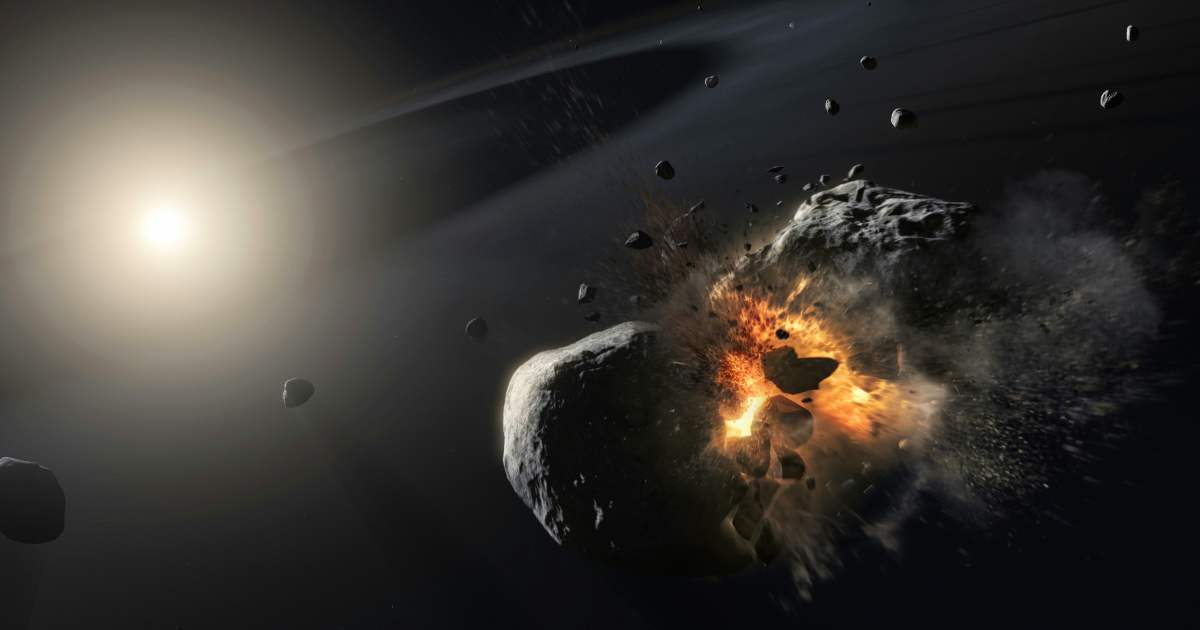
The celestial drama began earlier in the month, with the Harvest Moon on the evening of Monday, October 6, kicking off the 2025 season of supermoons. Observers were treated to a dramatically larger and more brilliant lunar disk due to a prime astronomical alignment. The October full moon was at an exceptionally tight perigee, accounting for its significantly enhanced visual size and brightness. This event set a powerful precedent, as it was the first in a series of highly visible lunar events slated for the remainder of the year. In fact, all three final full moons of 2025, in October, November, and December, will achieve the supermoon designation. Each of these three full moons will be within 90% of the Moon's absolute closest approach to Earth, making them the most proximate to the planet for the year and providing astronomers and enthusiasts with prime viewing opportunities.
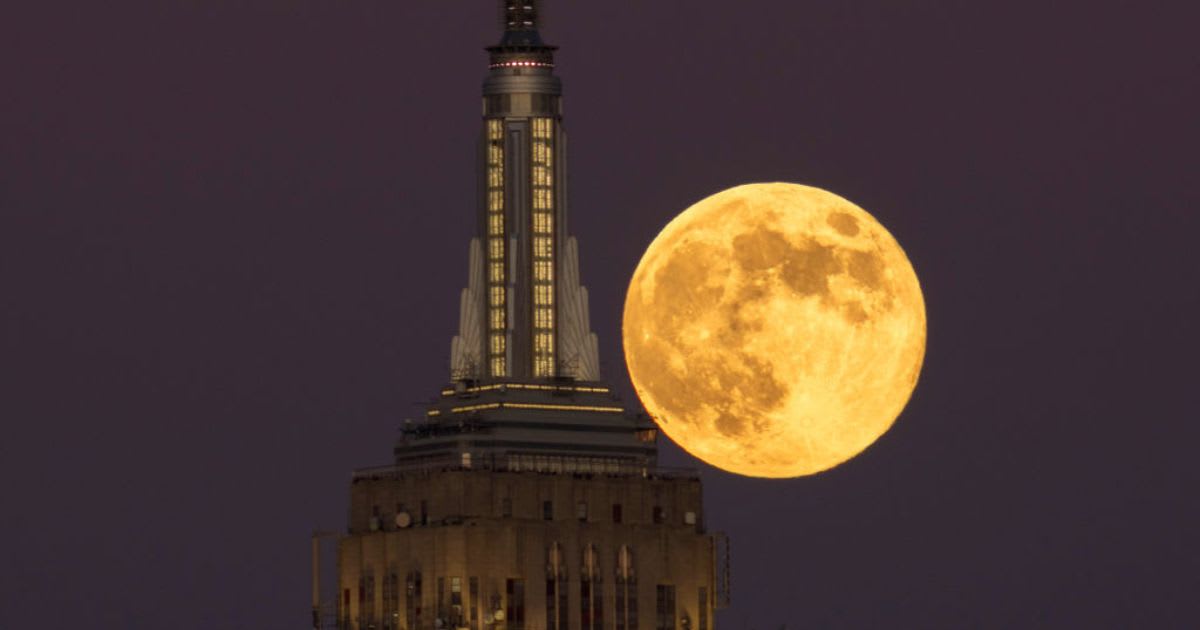
As the month's spectacular celestial show concludes, the night sky continues to offer endless wonder throughout the season. We encourage everyone to maintain their vigilance and look upward to appreciate the vastness of the cosmos. Grab your binoculars and check your local stargazing guides to experience the universe from your own backyard fully.
More on Starlust
Heart of Butterfly Nebula in the constellation Scorpius reveals clues to Earth's creation
